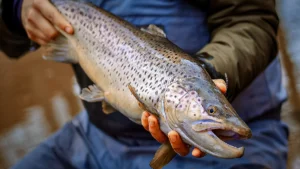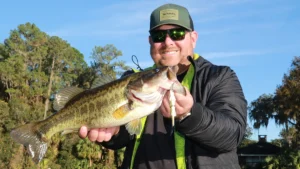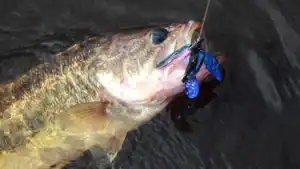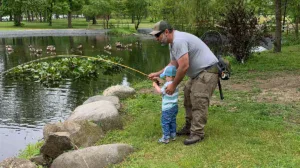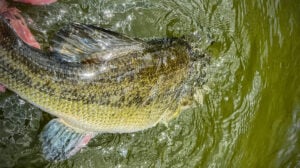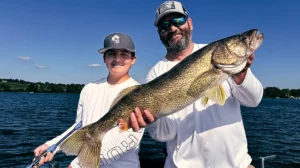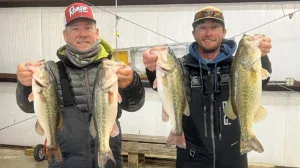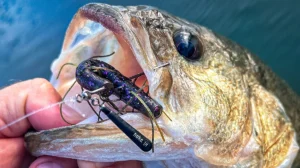I don’t know about you, but I’m getting pretty pumped up right about now. After months of nasty and humid Georgia heat, we’re finally getting some cooler temperatures; my wife and I were actually able to turn off the air conditioning unit the other evening and eat supper with the screen door open. This always excites me every single year because not only do the deer start moving and hitting our food plot but the big bass start crushing a topwater lure.
These cooler nights are very important in bass fishing. It sends a signal to the bass that it’s time to leave their summer haunts and begin chasing baitfish towards the backs of creeks. So as the deep bite starts to die off, savvy anglers can follow them as they migrate to the shallows and fill their bellies for the upcoming winter season. This is an incredible time to catch a pile of bass every single day you hit the water.
Although many of us aren’t quite in full autumn mode, the wheels are turning and the fall bite is developing more each day. As this happens, I’ve noticed over the years that there are a few essential places you need to find in order to take advantage of this pattern’s potential. These transitional periods can be tough but with a rudimentary understanding of both the baitfish and bass, you can hammer out some incredible days without a whole lot of work.
Hang with me for a few minutes because I’m going to tell you what I’ll be doing for the next six weeks or so. It’s not complicated and if somebody like me can make it work, I’m absolutely certain you can as well.
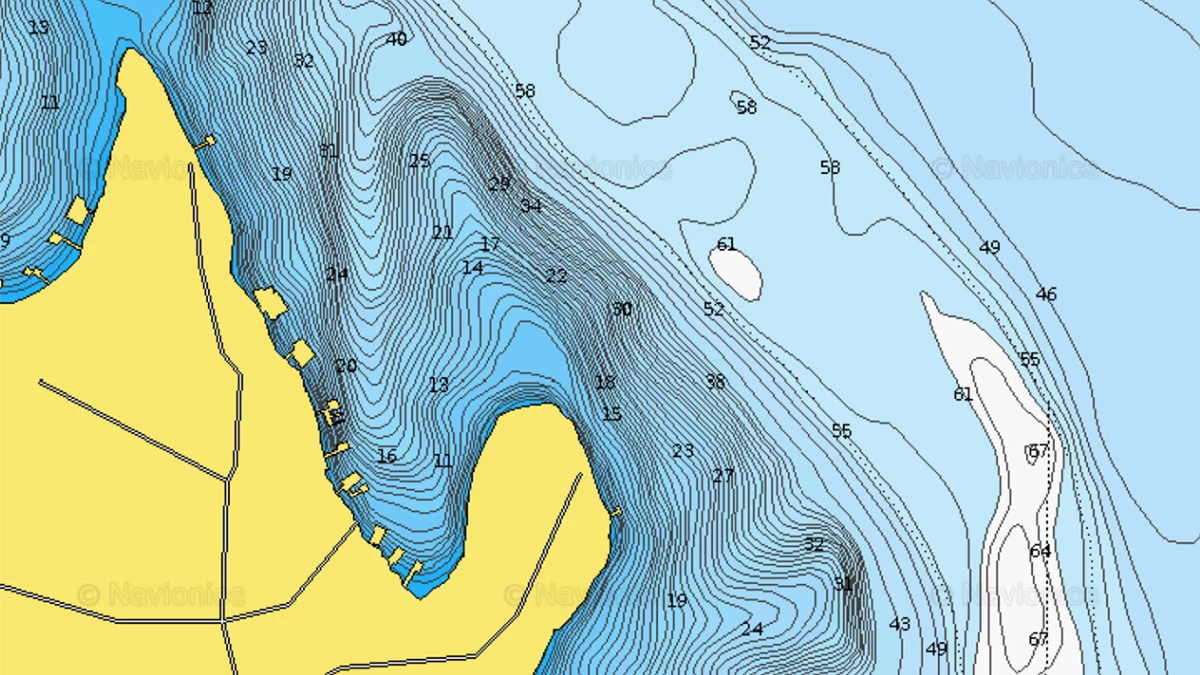
No. 1: Long points against the wind
Early fall bass fishing is a fickle thing at times. Throughout my life, it always seems like one day I can go out and catch almost a hundred bass and the next day I’ll go out and catch a limit if I’m lucky; I guess that’s why it’s such a humbling sport. But these struggles exist because the bass are following the baitfish and the baitfish are always moving this time of year. They’re making their way to the backs of creeks and the bass simply follow them. So if you get on a good bite one evening, you better catch every one you can because there’s a good chance they won’t be there tomorrow.
If you can find long, shallow points, however, your chances of intercepting these migrating fish will greatly increase and you can enjoy this feeding frenzy for a bit longer. For whatever reason, these points are just like rest stops on the side of the interstate. The bass are coming out of their deep summertime haunts and of course, chasing bait. But they don’t want to swim around forever and waste a bunch of energy trying to catch prey in open water, so they’ll situate themselves off the sides of these shallow points.
There will be a few small windows throughout the early mornings and late evenings when they’ll be in a full-on feeding frenzy on top of the points but the large majority of time, they’ll be on the sides of these points facing into the current and/or wind. The depth change essentially provides them with a strategic ambush point and they’ll let the current and/or wind wash the small baitfish over the shallow point and will attack them as they wash over.
For the angler, this natural occurence underlines the importance of casting your topwater lure into the wind. It can be a little annoying at times with a lighter topwater lure, so I highly recommend using a 1/2-ounce or heavier walking-style or Whopper Plopper-style bait. Stay as far away from the shallow, higher end of the point as you can and make a long cast perpendicular to the point. Work your bait slowly and slow it down a little more as you come across the shallow part of the point. I’ve had some incredible days doing this and the blowups can be absolutely electric. If you catch one doing this, hurry up and make another cast as quickly as possible because a lot of times, a single bite will ignite a feeding frenzy.
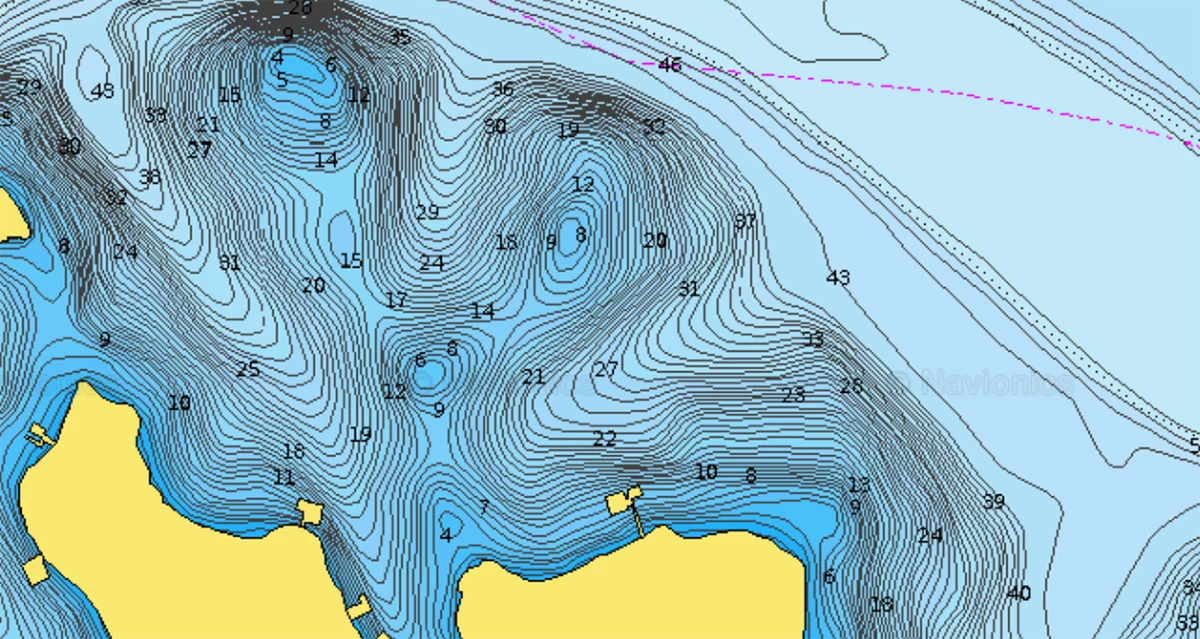
No. 2: Humps near the mouths of pockets
Another likely stopping point for early fall bass migrating to the shallows, humps near the mouths of small creeks or short pockets can be an excellent staging spot for both bass and baitfish. It’s a little harder to get on this bite in slick-calm water and somewhat clearer water is necessary but this can be an outstanding pattern for a few week-long period this time of year. Just like the points we just discussed, these humps are nice little “rest stops” the fish can use as they chase bait to the shallows during the fall.
Again, it’s important to make casts into the wind for the very same reason we just discussed about fishing points; those bass will hang out right off the depth change and just wait to clobber a poor ol’ baitfish as it gets blown by them.
Humps are very easy to find on your electronics, so this isn’t a difficult pattern to establish in most scenarios. In super clear water, this can work very well when the top of the hump is in 15 feet or so of water. In dingier water, I prefer the hump to top out in 8 feet or so. But of course, every lake is going to be totally different.
If you don’t have electronics and don’t like to mess with all of that stuff, don’t worry because you’re still in luck. Cruise around the lake and look for shoal marker buoys and target them. They stick out like a sore thumb to warn boaters of potential shallow water, so they’re easy to find and will likely hold bass. Get down-wind or down-current and start chucking that topwater lure and hang on tight. If you don’t get a bite in the first 10 casts or so, lift up the trolling motor and find the next shoal marker. If you’re diligent with this approach, you’re going to run across a school of active fish at some point in the day.
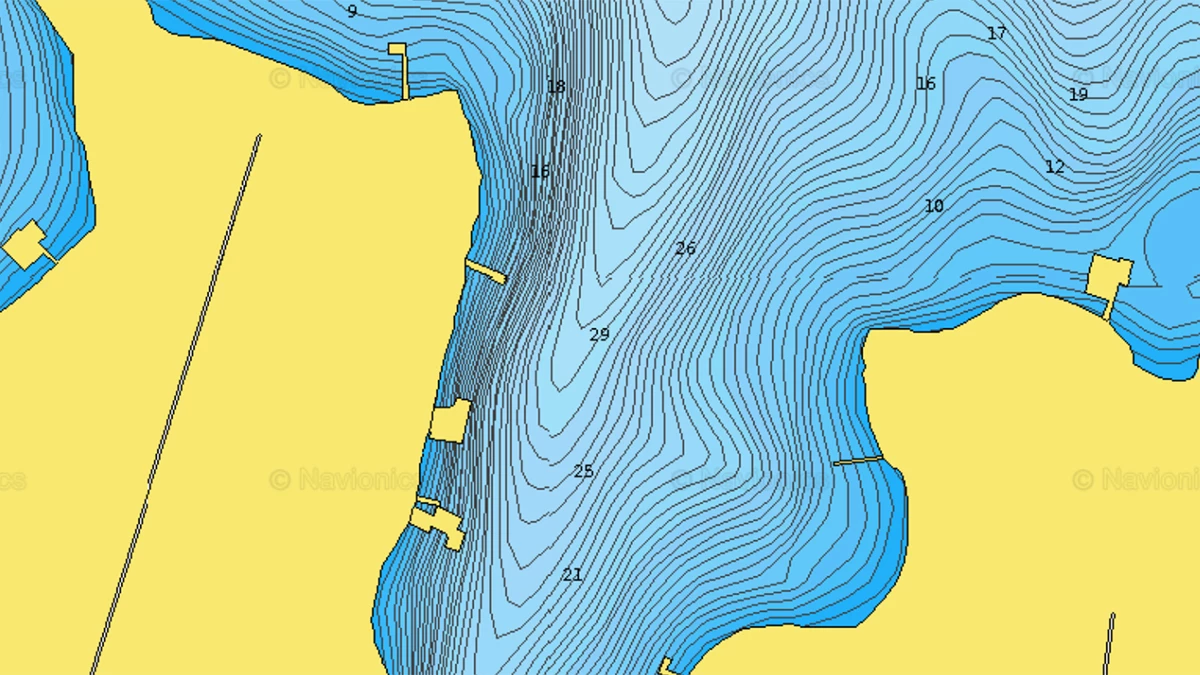
No. 3: Shallow seawalls in the first bend
This is a pattern that, in my opinion, a lot of folks overlook this time of year. I don’t normally target seawalls on the main lake in the early fall but I’ll certainly zero-in on them right when the seawalls turns into a short pocket or small creek. For whatever reason, this small turn and irregularity can concentrate a lot of baitfish which, of course, attracts a bunch of bass as well.
So why in the world would a bass want to hang out near a plain-looking seawall? They don’t offer much cover and they’re not that attention-grabbing, so the answer might surprise you.
As the baitfish move shallow, they’ll stop at certain points just like a bass. These seawalls, whether wooden or concrete, will grow a bunch of algae beneath the surface and those little baitfish absolutely love to feed on that algae. If you’re on the shore and quietly sneak down to an algae-covered seawall, I’d be willing to bet you’ll see a healthy population of bait nearby.
In order to maximize this bite and keep your bait in the prime strike zone for as long as possible, make long casts parallel to the seawall; I don’t like my bait to get much further than a foot or so from the seawall. The closer, the better.
The bass will hang out underneath the edges of docks or any old stumps off a depth change looking to ambush these baitfish, so when they see a well-placed topwater lure walking across the surface near a bunch of real-life baitfish, they’ll dart out from that piece of cover and absolutely destroy your bait. If you’re not into treble-hooked lures, I’d also recommend using a weightless soft jerkbait for this technique. You can quietly skip it right next to the seawall and again, the bass will eat it like a shark. I’ve actually had some bass bloody their noses before when they ate my topwater next to a seawall because they charged it so hard.
Don’t let this early fall transition get the best of you this year. It can be easy to get spun out after a day or two of subpar fishing but I’m telling you, if you can make a concerted effort to focus on the stopping points among the migration route of both the bass and the baitfish, you can have days where you catch dozens and dozens of nice fish. Try these areas on your home fisheries and tell us what you think; I’m willing to bet you’ll have a ball.


